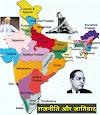Safety in Aviation Maintenance: A Cornerstone of
Airworthiness
Aviation has long been recognized as
the safest mode of transport in the world. This reputation is not solely the
result of advanced technology or skilled pilots, but equally due to the
tireless efforts of aviation maintenance personnel who ensure that every
aircraft remains airworthy. Safety in maintenance is the silent foundation of
safe flight operations.
The
Criticality of Maintenance Safety
According to the International
Civil Aviation Organization (ICAO), approximately 20% of aviation accidents
worldwide have a direct or indirect link to maintenance errors. The Federal
Aviation Administration (FAA) and the Directorate General of Civil
Aviation (DGCA), India, have also highlighted maintenance-related lapses in
several safety advisories. These statistics underscore the need for continuous
vigilance and a structured approach to maintenance safety.
Principles of Safe Maintenance
1. Compliance with Approved Data
All maintenance must be carried out
strictly in accordance with the Aircraft Maintenance Manual (AMM), Component
Maintenance Manuals (CMM), and other approved documents. Deviation or
improvisation without proper authorization is strictly prohibited.
2. Authenticity of Parts
ICAO Annex 8 and DGCA CAR stipulate
that only approved parts from certified suppliers must be used. Counterfeit or
untraceable components pose a severe threat to safety. Organizations must
maintain supplier evaluation and audit programs to ensure compliance.
3. Work Order System
No task should commence without an
authorized work order/job card. This ensures traceability, accountability, and
compliance with regulatory requirements. DGCA’s CAR-145 emphasizes this as a
mandatory practice.
4. Human Factors in Maintenance
Fatigue, distraction, complacency,
and stress remain major contributors to maintenance errors. ICAO’s Human
Factors guidelines (Doc 9824) and DGCA advisories stress the importance of Crew
Resource Management (CRM) and Maintenance Resource Management (MRM) training
for engineers.
5. Foreign Object Damage (FOD) Prevention
FOD is a persistent hazard in
maintenance areas. A clean, organized, and controlled work environment, along
with tool accountability systems, prevents inadvertent damage.
6. Effective Communication & Handover
Incomplete or ambiguous shift
handovers and technical log entries have been identified as root causes of
several incidents. Structured handover checklists and double-verification
processes should be mandatory.
7. Continuous Training and Competency
Recurrent training, including type
courses, regulatory updates, and SMS awareness, ensures that engineers remain
current with evolving technologies and regulations.
Learning from History
- Japan Airlines Flight 123 (1985): Improper repair of a pressure bulkhead led to the loss
of 520 lives — the deadliest single-aircraft accident in aviation history.
- British Airways Flight 5390 (1990): Incorrectly fitted bolts on a windscreen caused
explosive decompression mid-flight. Only the crew’s skill prevented a
tragedy.
- DGCA Safety Circulars (India): Several circulars have emphasized that incomplete
maintenance checks, poor handovers, or use of unapproved parts were
contributing factors in incidents.
Each of these cases demonstrates how
maintenance safety is as critical as operational safety.
Safety Management Systems (SMS) in Maintenance
ICAO Annex 19 mandates that
maintenance organizations implement SMS. Under DGCA CAR-145, approved
organizations must:
- Establish a reporting culture to capture hazards
and near-misses.
- Conduct trend analysis of maintenance errors.
- Take preventive and corrective actions
proactively.
- Encourage a just culture that promotes reporting
without fear of blame.
Building a Culture of Safety
Regulations and manuals form the
framework, but true safety lies in culture. Organizations must:
- Reinforce professionalism and accountability at every
level.
- Recognize and reward safe practices.
- Encourage reporting of hazards, errors, and
near-misses.
- Foster teamwork between flight crew, engineers, and
management.
Conclusion
Safety in aviation maintenance is
non-negotiable. It is not just a regulatory requirement but a moral obligation
to every passenger and crew member who steps onboard. By strictly adhering to
ICAO, FAA, and DGCA guidelines, embedding safety management practices, and
fostering a culture of accountability, aviation maintenance organizations
ensure that every flight is a safe flight.
In aviation, pilots may be seen as
the guardians of the skies, but maintenance engineers are the silent
guardians on the ground.










0 Comments